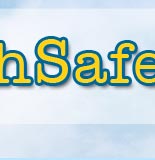|
|
|
|
1. School exterior grounds have been assessed for security concerns by law enforcement personnel or other trained individuals.
|
|
|
|
2. All areas of the building and grounds are supervised. There are no obvious “dead zones” where problems can occur. This includes parking lots, loading docks, and interior stairwells.
|
|
|
|
3. The interior of the school building is well-lit and clean. It reflects pride in school identity and the accomplishments of its student body.
|
|
|
|
| 4. There are effective access control policies and procedures for keeping intruders out of the school. |
|
|
|
|
5. There are effective policies and procedures for keeping weapons out of the building. |
|
|
|
6. A rigidly enforced key control policy is in effect, and sensitive locks are replaced every three to four years.
|
|
|
|
7. There are effective policies and procedures for keeping gang-related “identifiers” (i.e. clothing) and behaviors out of the building.
|
|
|
|
8. Staff members feel safe at all times during the school day.
|
|
|
|
9. The school has a well-formulated Mission Statement that is posted and shared with all parties.
|
|
|
|
10. The school has a collaboratively written Code of Conduct that has been kept up to date. It is educational more than punitive, and it defines desirable, as well as undesirable behaviors.
|
|
|
|
11. Administration and teachers have established an inviting learning environment that encourages school bonding and ownership from all groups of students.
|
|
|
|
12. Academic standards are high, and pride in achievement is emphasized and publicly expressed through multiple outlets.
|
|
|
|
| 13. Cultural, ethnic and other minority groups are valued; diversity is respected and honored. |
|
|
|
| 14. Parents are welcomed into the building are provided with opportunities and information to be full partners in their child's education. |
|
|
|
| 15. All teachers have received training in classroom behavior management, and 95% of disciplinary consequences are administered at the classroom level. |
|
|
|
16. All students receive evidence-based classroom instruction across multiple grade levels in anger management, social problem-solving, and/or conflict resolution.
|
|
|
|
17. The school has a comprehensive anti-bullying program in place, and it is systematically evaluated for its effectiveness.
|
|
|
|
| 18. The school has implemented a student peer mediation training program. |
|
|
|
19. The school has implemented a peer warning system that allows for confidential student communication to identified adults.
|
|
|
|
20. The school has a broadly represented Crisis Intervention Team that has been trained in crisis response and management.
|
|
|
|
21. There are staff members professionally trained in emergency first aid and CPR, and their identities and hourly locations are posted.
|
|
|
|
22. Administration and school personnel have undertaken initiatives to foster community-based supports and partnerships.
|
|
|
|
|
|
|
|
23. All teachers have received training on methods to differentiate academic instruction to meet diverse student needs.
|
|
|
|
24. The school has undertaken a special initiative to improve students’ reading achievement and monitor its effectiveness.
|
|
|
|
25. Effective procedures are in place for systematic early and valid identification of students at risk for behavioral, emotional, and academic difficulties.
|
|
|
|
26. Support services staff has training in evidence-based interventions for students with behavioral, emotional, and academic problems.
|
|
|
|
27. Support services staff is provided adequate time and relief from other duties to implement interventions for identified students at risk.
|
|
|
|
28. Existing interventions for at-risk students have undergone recent program evaluations to assess their effectiveness.
|
|
|
|
29. Administrators treat office referrals as teaching opportunities to augment disciplinary procedures.
|
|
|
|
30. Out-of-school suspension is exceedingly rare and used only for clear issues of student safety and when home supervision can be assured.
|
|
|
|
31. In-school suspension is used sparingly, only for the most serious offences, and it contains an academic support component.
|
|
|
|
32. School personnel have assessed the drop-out problem and implemented evidence-based dropout prevention programs.
|
|
|
|
33. The school has implemented a mentoring program for at-risk students.
|
|
|
|
34. Ongoing needs assessment and program planning are driven by authentic data from disciplinary referrals and academic progress monitoring. Interventions are linked to the data.
|
|
|
|
|
|
|
|
35. Students with chronic and persistent behavior problems are routinely provided with assessment-driven behavior intervention plans.
|
|
|
|
36. Students with chronic anger management and aggression problems are provided with evidence-based skills training by support services staff.
|
|
|
|
37. All school personnel have been taught and have practiced ways to defuse and redirect students who show evidence of aggressive and violent behaviors.
|
|
|
|
38. There are staff members professionally trained in student restraint and safe transport, and their identities are known by everyone.
|
|
|
|
39. Effective partnerships or wraparound arrangements with families, community mental health, law enforcement and social service agencies are maintained to support the highest risk students.
|
|
|
|
40. School personnel have been trained to identify and help students who live with neglect and violence.
|
|
|
|






 School Safety Checklist
School Safety Checklist
